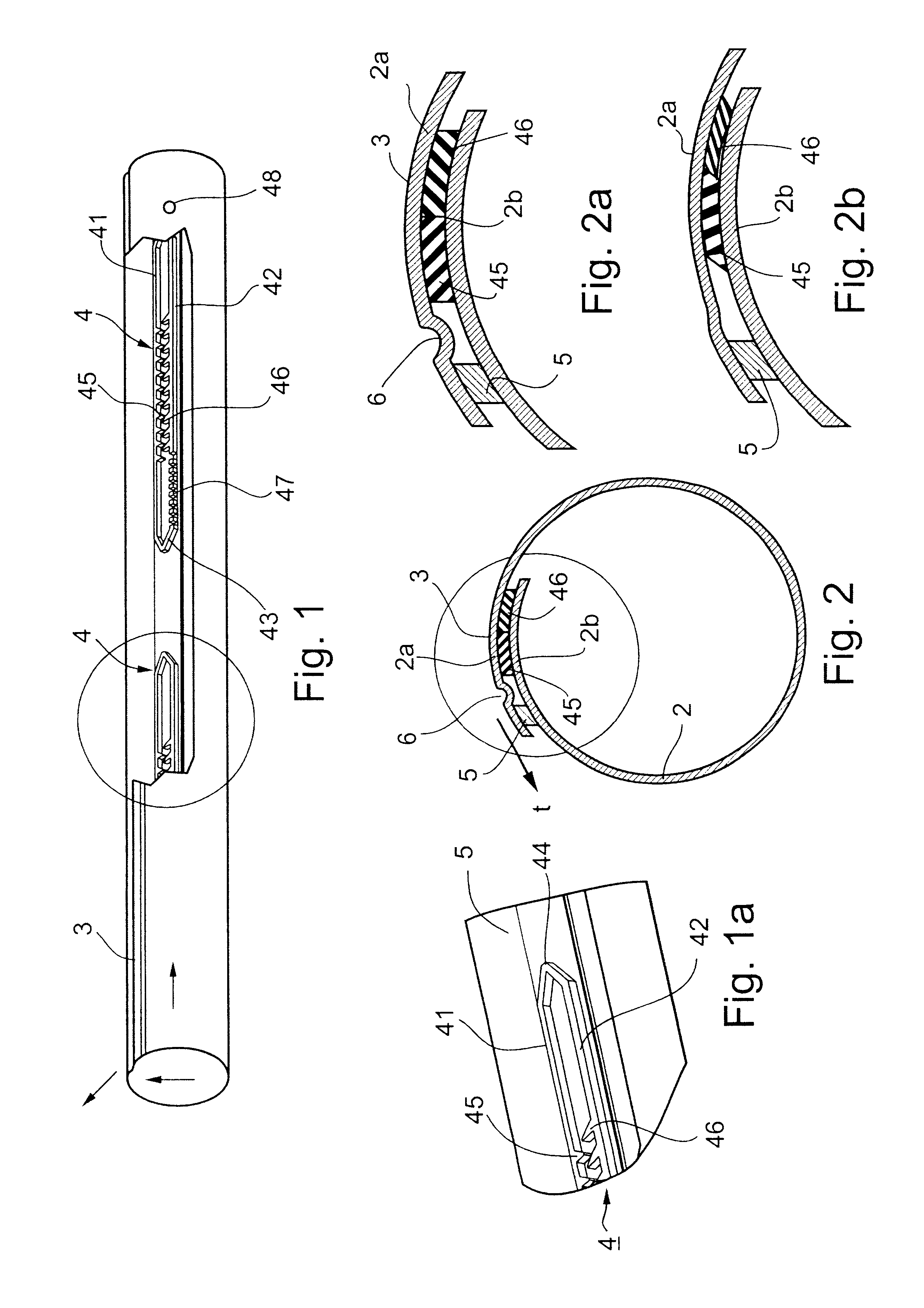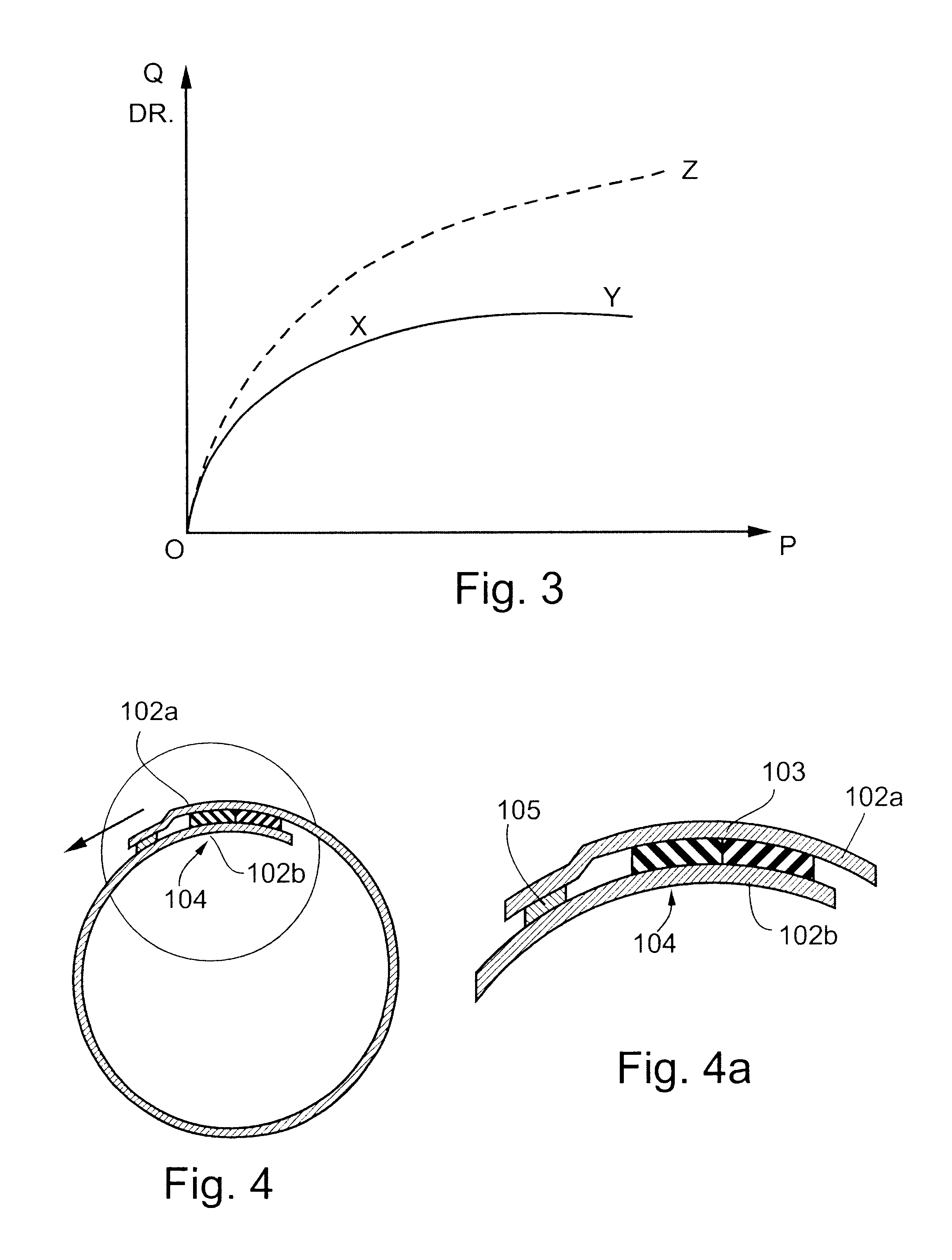Drip irrigation hose and method and apparatus for making same
a technology of drip irrigation and hoses, which is applied in the direction of watering devices, other domestic objects, coatings, etc., can solve the problems of high water resource conservativeness, sensitivity to clogging, and difficulty in ensuring relatively uniform discharge rates along the length of the hose, so as to reduce clogging sensitivity, reduce clogging, and produce in volume
- Summary
- Abstract
- Description
- Claims
- Application Information
AI Technical Summary
Benefits of technology
Problems solved by technology
Method used
Image
Examples
Embodiment Construction
[0067]With reference to FIGS. 1 and 2, there is illustrated a drip irrigation hose comprising a sheet 2 of thin, flexible plastic material having opposed outer edge portions 2a, 2b which are overlapped and bonded together to form a seam 3 extending longitudinally of the so-produced tube for conducting pressurized water therethrough. A plurality of emitter elements, each generally designated 4, are bonded to and between the overlapping portions 2a, 2b of the sheet 2 at longitudinally-spaced locations along the seam 3, and define a plurality of restricted flow passageways for discharging water from outlets in the seamed hose at a slow rate.
[0068]The overlapping portions 2a, 2b of the flexible sheet are bonded together both by the emitter elements 4, and by a continuous, longitudinally-extending rib 5 extending along the outer edge of the outer overlapping portion 2a. As shown particularly in FIGS. 2 and 2a, the outer overlapping portion 2a is formed with an inwardly-extending slack 6 ...
PUM
| Property | Measurement | Unit |
|---|---|---|
| temperature | aaaaa | aaaaa |
| temperature | aaaaa | aaaaa |
| time | aaaaa | aaaaa |
Abstract
Description
Claims
Application Information
 Login to View More
Login to View More - R&D
- Intellectual Property
- Life Sciences
- Materials
- Tech Scout
- Unparalleled Data Quality
- Higher Quality Content
- 60% Fewer Hallucinations
Browse by: Latest US Patents, China's latest patents, Technical Efficacy Thesaurus, Application Domain, Technology Topic, Popular Technical Reports.
© 2025 PatSnap. All rights reserved.Legal|Privacy policy|Modern Slavery Act Transparency Statement|Sitemap|About US| Contact US: help@patsnap.com



